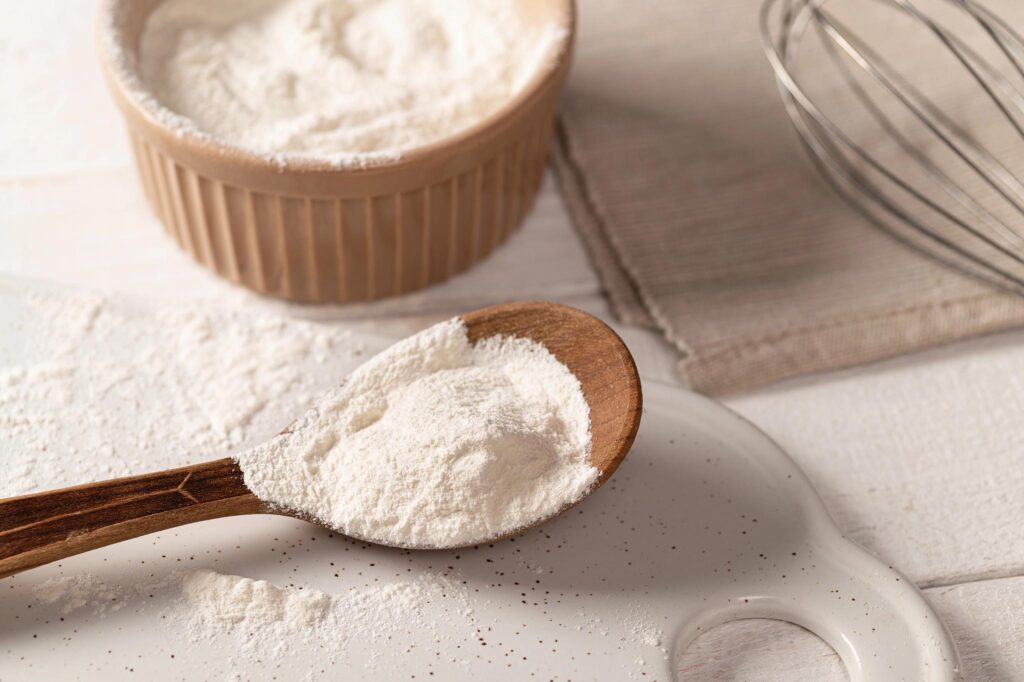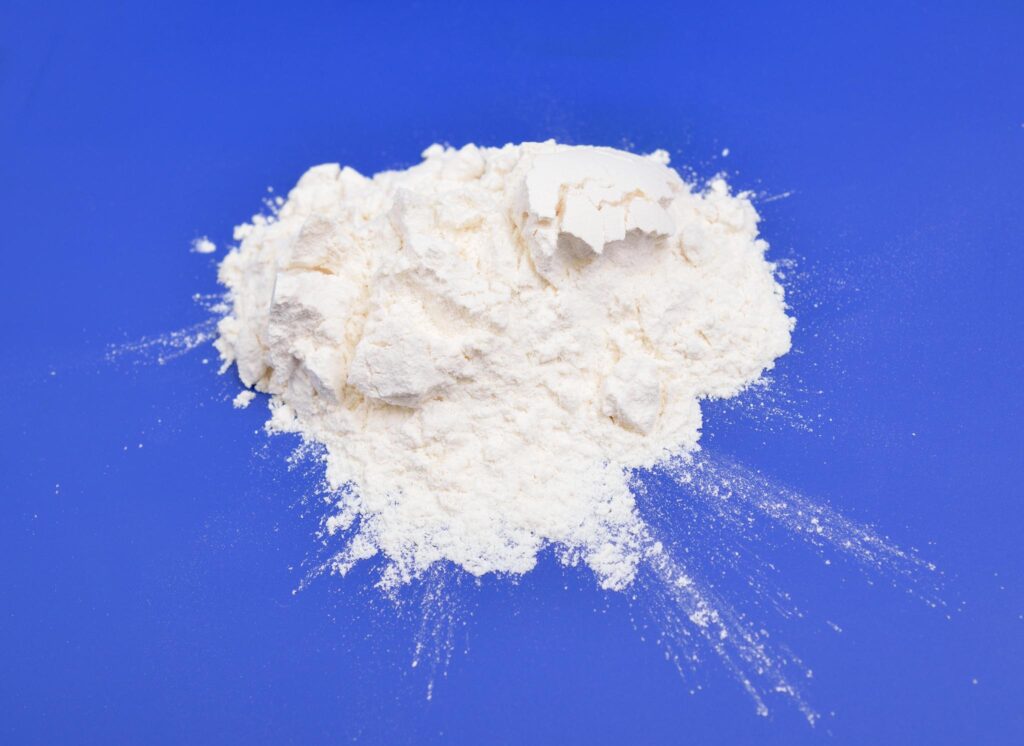Xanthan Gum: Benefits, Uses, and Health Information
Xanthan gum is a widely used food additive known for its exceptional thickening and stabilizing properties. Commonly found in products ranging from sauces to gluten-free baked goods, it offers more than just texture enhancement. This versatile ingredient is valued not only for its culinary benefits but also for its potential positive effects on digestion and health. Whether you’re catering to specific dietary needs or seeking to understand food labels, learning about xanthan gum can empower you to make informed choices. Discover its many uses, benefits, and essential health information in this comprehensive guide.
Key Highlights
- Xanthan gum is a versatile, plant-derived additive widely used for thickening, stabilizing, and improving food texture, especially in gluten-free products.
- Its fermentation-based production ensures purity, safety, and clean-label use, making it a trusted ingredient for quality-conscious consumers.
- Research shows xanthan gum supports digestive health and acts as a safe, effective soluble fiber in various foods and supplements.
- Most people tolerate xanthan gum well, but those with digestive sensitivities or allergies should moderate intake and review ingredient sources.
- Alternative gums like guar, locust bean, and psyllium provide similar benefits, enabling tailored recipes for special diets without gluten or allergens.

Understanding Xanthan Gum and Its Role in Food Science
Xanthan gum has become a staple ingredient in modern food science, transforming the texture and quality of diverse foods across the globe. Used as a versatile food additive and stabilizer, gum xanthan appears in everything from gluten-free bread to sauces and dietary supplements, bringing unique properties that improve consistency, shelf life, and mouthfeel. This prominence stems from both its plant-based origins and exceptional functionality in food formulation. To appreciate its value, it’s essential to explore how xanthan is produced and why its method of manufacturing directly influences its safety, quality, and trusted place in the food industry. Understanding these factors reveals why xanthan gum-based ingredients are now featured so widely on product labels and ingredient lists.
How Xanthan Is Produced and Why It Matters
Xanthan gum is a standout food additive, prized for its unique ability to modify and enhance the structure of foods without overshadowing natural flavors or ingredients. Its production begins with simple plant-based carbohydrates, typically derived from corn, wheat, or soy. These sugars form the starting point for a fascinating process in which the microorganism Xanthomonas campestris ferments these carbohydrates, producing the viscous, gel-like substance known as xanthan.
This fermentation is where xanthan gum earns its status as a safe, effective, and sustainable stabilizer. After fermentation, alcohol precipitation separates the gum from the fermentation broth, and what remains is thoroughly washed, dried, and milled into a fine gum powder that’s ready for food and supplement applications. This controlled process ensures xanthan gum’s purity and makes it a reliable food additive for quality-minded manufacturers.
The importance of this process runs deeper than basic safety; it’s intimately connected to how xanthan functions as a stabilizer, emulsifier, and thickener in countless food products. Unlike many additives that rely on synthetic chemistry, gum xanthan’s plant-derived origin and microbial creation make it a preferred choice for clean-label foods and those marketed as natural or free from artificial additives. It’s this distinction that’s central to xanthan gum’s popularity among consumers scrutinizing every label for transparent sourcing and trustworthy ingredients, especially in the context of gluten-free foods and special diets.

Because of its fermentation origins, xanthan gum contains no gluten, making it a powerful ally in gluten-free bread and baked goods. The gum’s molecular structure traps water, creating elasticity and a satisfying bite, something that’s notoriously hard to achieve with gluten-free ingredients alone. This explains why xanthan gum-based products dominate the gluten-free aisle and why food technologists consistently turn to this additive for reliable texture and shelf stability. The ability to replicate the texture of conventional baked goods without relying on gluten is transformative for individuals seeking safe, plant-derived alternatives.
Xanthan gum is also celebrated for its role in stabilizing sauces, gravies, and salad dressings, keeping particles suspended and preventing separation over time. Thanks to its unique polysaccharide structure, just a small amount can have a pronounced impact, thickening and stabilizing foods without requiring heat. This property makes xanthan gum an ideal additive for cold-prepared foods or applications where maintaining freshness and original mouthfeel is crucial. Manufacturers often blend gum xanthan with other gums to create the perfect consistency, further broadening its utility across food categories.
Safety is paramount with any additive, and xanthan gum’s production is stringently regulated to meet high food safety standards. Its status as a safe food additive has been substantiated by extensive research, and it is listed as generally recognized as safe (GRAS) by regulatory bodies. The careful production and rigorous testing also ensure that xanthan gum contains no harmful residues or impurities, making it suitable for foods, supplements, and medical nutrition products. Whether used in plant-based foods, as an ingredient in specialty supplements, or as a key component in gluten-free baking, gum xanthan’s role as a safe stabilizer and thickener is indispensable.

From the fermentation of plant carbohydrates to the finished gum powder sealed inside ingredients packaging, every stage of xanthan gum’s production has been refined to balance efficiency, sustainability, and the highest standards of safety. These factors underpin why xanthan gum-based ingredients don’t just enhance the appeal of foods, they make new culinary and dietary possibilities accessible for people worldwide. For anyone examining a food or supplement label, understanding how xanthan is produced explains both its ubiquity and the sense of trust manufacturers and consumers place in this remarkable food additive.
Xanthan Gum Benefits for Health and Nutrition
Xanthan gum isn’t just a food science marvel; its presence in countless products owes much to its documented health and nutrition benefits. As researchers continue to explore its roles in diet and wellness, xanthan gum is recognized for supporting gluten-free foods, enhancing nutrition, and serving as an integral ingredient for those managing food sensitivities. Through decades of research, health experts and food manufacturers have increasingly valued xanthan gum for its role in digestive health, stability in supplements, and overall dietary safety. Understanding these advantages highlights why xanthan features so prominently in foods marketed for health and optimal nutrition today.
Research-Backed Xanthan Advantages in Diet
Scientific interest in xanthan gum has surged due to its versatility in enhancing modern diets, making it far more than a mere textural agent in foods. Multiple studies point to how xanthan’s unique structure makes it a standout in the nutrition world, especially for those seeking healthy substitutes or dealing with food sensitivities such as gluten intolerance. Perhaps the most recognized advantage is its ability to replicate the structure and elasticity provided by gluten in baked goods. In gluten-free diets, xanthan gum is often irreplaceable, its molecular matrix traps both air and moisture, mimicking what gluten does in traditional recipes. This allows individuals with celiac disease or gluten sensitivity to enjoy soft, cohesive breads and pastries that were once off-limits.
Countless nutrition-focused foods feature xanthan gum on their labels, and it’s considered completely safe for routine consumption, with research backing its inclusion in a wide variety of foods and supplements.
Beyond its importance in gluten-free products, xanthan gum offers additional health and nutrition benefits that extend to broader populations. Nutritionists and dietitians highlight xanthan’s role in supporting digestive health. Some research suggests that when consumed in moderate amounts, xanthan gum may act as a soluble fiber, potentially increasing bowel regularity and supporting gut health. As a soluble fiber, xanthan gum resists breakdown by the digestive tract, which means it can contribute to fecal bulk and improve stool consistency, health advantages noted by several clinical studies.

While research continues to clarify its exact role as a supplement, its presence in foods formulated for enhanced gut health signals its beneficial properties in daily nutrition.
The safe reputation of xanthan gum is another key advantage. Regulatory assessments and clinical research repeatedly confirm that, for the vast majority of individuals, xanthan gum poses minimal risk for side effects. When consumed in quantities typically found in foods and supplements, the gum is well-tolerated, and adverse effects are exceedingly rare. This safety profile has been established through rigorous testing for both food and supplement uses, supporting its widespread approval by health authorities worldwide.
Label transparency ensures that those with dietary concerns or allergies can easily identify xanthan gum, further underscoring its value as a trusted, health-conscious ingredient.
Xanthan gum’s utility in foods designed for specific health needs is especially significant in nutrition-focused diets. It can be used as a thickener in low-calorie foods, smoothies, or medical nutrition supplements, where it enhances texture without adding appreciable calories or carbohydrates. This is vital for individuals managing blood sugar or those seeking weight control, as it offers mouthfeel, stability, and satiety in calorie-conscious diet plans. The gum’s compatibility with plant-based, gluten-free, and allergen-free foods also gives manufacturers a safe, reliable thickener that maintains nutritional objectives without unwanted additives or allergens.
For consumers, seeing xanthan gum on a label often signals a product developed with care for special nutrition requirements or food sensitivities.
To address any potential concerns, it’s worth noting that research continues to support xanthan gum’s overall safety and health compatibility. While rare side effects, such as digestive discomfort, can occur if extremely large amounts are consumed, products designed for daily nutrition and health typically use safe, controlled quantities. Moreover, the presence of xanthan gum in supplements expands its reach, enabling delivery of nutrients in stable, palatable formats for those who struggle with swallowing pills or with special dietary needs.
All these factors combine to make xanthan gum not only a cornerstone of gluten-free and specialty foods, but also a contributor to safe, effective, and research-backed nutrition for everyone focused on health and wellness.

Xanthan Gum in Cooking and Baking Applications
Xanthan gum has dramatically changed the landscape of cooking and baking by acting as a multifunctional ingredient that elevates both the sensory qualities and technical reliability of a wide range of foods. From artisan bread to silky pie fillings and resilient gluten-free baked goods, xanthan gum is often the “secret” that creates a satisfying mouthfeel and consistent results. Its versatility allows it to substitute traditional thickeners or stabilizers, working especially well in recipes where gluten or other structural components are absent.
Examining the specific effects of xanthan gum on texture and stability reveals how this unique gum contributes to dependable and elevated culinary creations, ensuring everything from bread to sauces benefits from its remarkable properties.
Enhancing Texture and Stability with Xanthan Gum
Xanthan gum is a game-changer for anyone passionate about food, whether you’re a home cook or a professional baker. Its ability to enhance texture and stability is rooted in its one-of-a-kind chemical structure, making it indispensable for a variety of baking and food applications. When xanthan gum is dispersed in water, it forms a viscous, elastic solution that mimics or even surpasses the texture-providing qualities of gluten, one of the reasons it’s so often included in gluten-free bread, pie crusts, and other baked goods. In recipes missing gluten, xanthan gum acts as the “glue” that binds ingredients, preventing crumbly bread, dry pastries, or runny fillings. The gum creates a cohesive dough or batter that can hold together under heat and moisture, producing food with a soft crumb and satisfying chew, reminiscent of traditional wheat flour products.
Xanthan gum’s importance in baking goes even deeper. Its unique stabilizing power arises from its ability to form a protective matrix around starch granules and proteins, preventing water from escaping during baking or cooling. This means that fresh bread stays moist longer, pie fillings don’t “weep,” and sauces remain glossy and unified on the plate. For gluten-free recipes, a market segment that continues to grow, xanthan gum is virtually unrivaled. It allows baked goods to rise properly and maintain their structure without the unreliable, dense, or gritty results that can plague flour blends missing gluten. When added in even tiny amounts, xanthan gum turns gluten-free batters and doughs into pliable, resilient mixtures that bake up beautifully. What sets xanthan gum apart from many other food additives is its ability to function at low concentrations.
Where other gums may require higher percentages to deliver noticeable results, xanthan’s potent thickening and stabilizing action shines through at very small doses, which also makes it a cost-effective option. In bread, a gram or two of xanthan gum, blended with flour or starches, brings about a uniform crumb and helps capture air bubbles produced by rising agents, just as gluten does in conventional wheat loaves. In a classic pie, the gum ensures that fruit fillings don’t seep liquid after cooling. This is especially crucial for foods that will be transported or need to maintain visual appeal and consistency over a longer shelf life. Not just limited to baked goods, xanthan gum finds its place in sauces, salad dressings, and even dairy-free foods.
As a direct additive, xanthan gum acts as a stabilizer in salad dressings, keeping seasonings and oil in suspension so the product doesn’t separate on the shelf or in your fridge. In soups or gravies, xanthan improves viscosity without imparting any flavor or requiring high temperatures to dissolve, which is a big win for both hot and cold food preparations. This temperature stability means chefs and manufacturers can use xanthan to improve the sensory and structural qualities of foods that might otherwise suffer from separation, settling, or syneresis (the release of water).
Because modern shoppers scrutinize every ingredient and label, the fact that xanthan gum delivers so many benefits without introducing gluten or artificial contaminants makes it a frequent choice in foods branded as “clean label” or “free from” certain allergens. People looking for plant-based, gluten-free, or allergen-sensitive foods are reassured by the simple, recognizable name “xanthan gum” on packaging, a far cry from some harder-to-pronounce additives. This aligns with both consumer demand for transparency and the food industry’s mission to deliver safe, effective, and reliable ingredients across product lines.
Ultimately, xanthan gum is much more than just a thickener, it’s a foundational additive that helps bridge the gap between traditional and modern baking, elevating both classic recipes and innovative, health-focused foods. Its capacity to mimic gluten’s elastic, binding effects has made it the standard-bearer for texture and stability, whether you’re crafting a rustic loaf of bread, perfecting a glossy pie, or reimagining a familiar comfort food in gluten-free form. This impressive versatility is why, if you examine most gluten-free baked goods recipes or packaged foods, you’ll find xanthan gum listed among the essential ingredients, underscoring its reputation as a trusted, effective, and multifunctional food ingredient for today’s kitchens.
Potential Side Effects and Health Considerations
While xanthan gum is widely celebrated for its applications in food, gluten-free recipes, and supplements, it’s essential to also examine what scientific studies have to say about possible side effects and health concerns. Understanding the safety profile of this plant-derived additive allows consumers, especially those with sensitivities or underlying health conditions, to make informed decisions. Here, we explore who should exercise extra caution with xanthan gum consumption and discuss the nuances behind its overall reputation as a safe, well-studied food ingredient. Examining health considerations helps clarify its standing among additives, particularly for those aiming to optimize their well-being.
Who Should Be Cautious with Xanthan Consumption?
Although xanthan gum is classified as a safe food additive and supplement ingredient for the majority of the population, certain individuals should pay close attention to their intake due to specific health circumstances or heightened sensitivities. As its use has proliferated in gluten-free bread, packaged foods, and various health supplements, along with increased attention on product labels, it’s crucial to know the rare but relevant side effects and understand who could be most at risk. This knowledge comes from a combination of clinical studies, food safety assessments, and ongoing research into additives and ingredients.

First and foremost, people with significant gastrointestinal sensitivities or pre-existing digestive conditions may be more susceptible to experiencing side effects from xanthan gum. While most individuals tolerate moderate amounts well, some people report mild gut-related symptoms when consuming larger quantities, such as bloating, gas, or changes in stool consistency. These side effects typically occur in those who already have irritable bowel syndrome (IBS), inflammatory bowel disease (IBD), or other forms of gut dysregulation. Since xanthan gum behaves as a soluble fiber and bulking agent, consuming it in unusually high amounts, as might occasionally happen through overuse of certain supplements or concentrated health foods, can sometimes lead to transient digestive discomfort. In one well-cited study, healthy adults consuming high doses reported increased stool frequency and mild gastrointestinal side effects, though these resolved when intake was stopped or moderated.
People with a severe allergy to the plant sources (corn, soy, or wheat) involved in xanthan gum production should also exercise increased caution. While the gum undergoes significant processing and purification, trace proteins could theoretically remain, potentially causing reactions in ultra-sensitive individuals. Reading the label for ingredient sourcing, especially in foods labeled “gluten-free” but derived from wheat or other allergenic plants, is a wise precaution. Most manufacturers adhere to stringent allergen controls, yet consumers with life-threatening allergies should verify sourcing and opt for certified allergen-free foods and supplements whenever possible.
A subset of the population, particularly young children, the elderly, or those with certain underlying health conditions, might also respond differently to additives such as xanthan gum. Young children’s digestive tracts are more sensitive, and studies advise moderation, especially since they may consume higher levels relative to their body weight from multiple processed foods containing the additive. Likewise, elderly individuals with reduced gut motility or people recovering from major intestinal surgeries might need to monitor their intake to avoid undesired laxative effects or interference with other dietary needs. Health professionals often recommend reviewing the ingredients list or supplement facts panel of foods, beverages, or supplement products before introducing them to at-risk populations.
Another important consideration is for individuals who rely heavily on supplements, meal replacements, or medical nutrition formulas for daily sustenance, such as those with swallowing difficulties or specific health conditions requiring tube feeding. Studies show that in rare cases, excessive xanthan gum intake (well beyond typical food use) was associated with increased stool output and possible interference with nutrient absorption, though this effect is generally only seen with medically prescribed high doses. As with any additive, moderation is key; using products as directed keeps intake well within the safe limits validated by food safety research.
Despite the above concerns, for healthy adults and most children, studies overwhelmingly confirm that xanthan gum is safe when consumed as part of foods or supplements according to established guidelines. The U.S. Food and Drug Administration (FDA), European Food Safety Authority (EFSA), and other international agencies have reviewed extensive toxicology and clinical data, consistently labeling xanthan gum as GRAS (Generally Recognized As Safe) for food and supplement use. People with celiac disease or gluten intolerance especially benefit from xanthan gum’s presence in gluten-free foods, where it helps recreate familiar textures without triggering known allergens.
Ultimately, vigilance is advised primarily for those with pre-existing digestive disease, allergies to source plants, or atypical medical diets. For the vast majority, reviewing the label for xanthan gum and knowing its origin delivers reassurance about its safety and utility. Adhering to recommended amounts in foods and supplements ensures this multifaceted gum remains a trusted ingredient, supporting health-conscious diets, clean-label foods, and innovative gluten-free products alike. As always, personalizing dietary choices based on individual health and consulting with a medical professional in special cases will ensure xanthan gum remains a valuable, safe, and beneficial additive on your plate or in your supplement regimen.
Exploring Gum Substitutes for Special Diets
For individuals navigating special diets, whether due to gluten sensitivities, vegan preferences, allergies, or clean eating goals, the search for effective gum substitutes in food formulations is crucial. Xanthan gum has gained prominence for its reliable performance in gluten-free and allergen-free foods, acting as a stabilizer, thickener, and texture enhancer. However, understanding the broader landscape of gum substitutes is key for both home cooks and manufacturers seeking versatile, safe, and label-friendly ingredients that align with evolving consumer needs.
Among the most widely utilized alternatives is guar gum, a plant-derived ingredient often touted as a direct substitute for xanthan gum in baking, sauces, and frozen desserts. Like xanthan, guar gum is valued for its ability to provide structure, retain moisture, and improve the mouthfeel of gluten-free products. Unlike gluten, which gives elasticity and cohesiveness to traditional breads, gum substitutes like guar gum and xanthan are essential for replicating these properties in gluten-free recipes. The fine gum powder form of both additives makes measuring and blending straightforward in both large-scale food production and home kitchens, ensuring consistent results without the risk associated with gluten for sensitive individuals.
Another important consideration is the functional distinction between these gum substitutes. Xanthan gum, or “gum xanthan” as sometimes labeled, forms viscous solutions at low concentrations, lending stability to liquids and emulsions. This efficiency means that bakers and food makers often favor xanthan as a primary food additive in gluten-free flour blends, pie fillings, and salad dressings. Meanwhile, guar gum’s gelling action tends to be strongest in cold applications and binds more rapidly in recipes, making it a practical option for foods that require a soft, supple texture without the risk of heating degradation. Both can be safely integrated as ingredients in foods, but individual tolerance, flavor neutrality, and cost considerations can guide ingredient selection based on recipe goals or dietary needs.

While additive xanthan and guar gum dominate the gluten-free and allergen-free food sectors, several other gum substitutes support special diets. Locust bean gum, derived from the seeds of the carob tree, offers a mild flavor and thickening power in dairy-free and vegan applications. Similarly, psyllium husk, konjac, and chia seed gel have emerged as safe, fiber-rich alternatives, especially for those seeking food additive options from non-traditional sources. Each substitute offers unique properties, some providing more elasticity, others contributing to bulk or stabilizing food structure. For example, psyllium can boost fiber content, supporting gut health in gluten-free baking, while chia gels are praised for their nutritional profile and plant-based appeal.
Regardless of the substitute chosen, it’s vital to pay attention to ingredient interactions in recipes. The right combination of gums and fibers can dramatically enhance the taste, appearance, and stability of baked goods, dressings, and sauces, without compromising on clean labels or dietary restrictions. Importantly, all these food additives, including xanthan, are considered safe when used within regulated limits, and they help ensure that special diets remain enjoyable, convenient, and nutritionally sound. With careful selection and creative use of gum substitutes, it’s easier than ever to create foods that satisfy both culinary and health goals for everyone at the table.
In summary, xanthan gum is a versatile ingredient offering thickening, stabilizing, and health benefits in both culinary and industrial settings. While generally recognized as safe for most people, it’s important to use it in moderation and consult a healthcare professional if you have digestive concerns or food allergies. Whether you’re seeking to improve the texture of recipes or looking for gluten-free alternatives, xanthan gum stands out as a reliable choice. By understanding its uses and health profile, you can confidently incorporate xanthan gum into your diet and daily routine for enhanced food experiences.

Xanthan Gum for Skin
Xanthan Gum is a natural, plant-derived polysaccharide widely used in clean skincare and cosmetic formulations. Created through the natural fermentation of sugars by the Xanthomonas campestris bacterium, it functions as a gentle yet powerful thickener, stabilizer, and texture enhancer. When added to creams, serums, and masks, it helps bind water and oil phases together, giving formulas a smooth, stable consistency without synthetic polymers or silicones.
In skincare, Xanthan Gum’s role is primarily structural—but its effects are sensorial and protective. It forms a light, flexible film on the skin’s surface that helps slow moisture loss, leaving the complexion soft and hydrated. Because it’s non-comedogenic and hypoallergenic, it’s well-tolerated by all skin types, including sensitive or acne-prone skin. Its ability to suspend natural ingredients—such as Kaolin Clay, essential oils, or botanical extracts—keeps every component evenly distributed for consistent performance with each use.
Formulators typically use Xanthan Gum at very low levels—between 0.1% and 1%—to create silky serums, balanced lotions, and perfectly spreadable clay masks. When combined with Kaolin Clay, it prevents cracking and separation, allowing the mask to dry evenly while maintaining a smooth texture and easy rinse-off. This synergy gives both home formulators and professional brands a reliable, naturally sourced base for modern cosmetic products.
Recognized by Health Canada under INCI as Xanthan Gum, it requires no special restrictions and qualifies as a naturally derived ingredient in organic and eco-certified formulations. Beyond its technical role, it represents the growing shift toward clean chemistry—where texture, stability, and performance can all be achieved through nature-based science.
Xanthan Gum brings balance and refinement to natural skincare—uniting simplicity, safety, and elegance in every formula.
